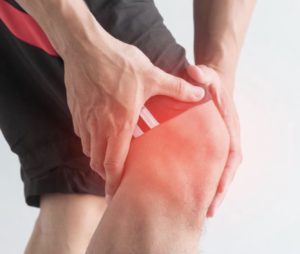Is knee pain coming from the hips? CORE Omaha Explains…
. 2016 Apr 27;29(2):259-266.
doi: 10.3233/BMR-150622.
Relationship between frontal plane projection angle of the knee and hip and trunk strength in women with and without patellofemoral pain
- PMID: 26406201
- DOI: 10.3233/BMR-150622
Abstract
Background: It is theorized that increased dynamic knee valgus relates to decreased hip posterolateral muscle strength.
Objective: The aim here was to assess the relationship between the frontal plane projection angle (FPPA) of the knee and hip and trunk muscle strength in women with and without patellofemoral pain (PFP).
Methods: The sample comprised 43 women: Patellofemoral Pain Group (PPG, n = 22) and Control Group (CG, n = 21). Muscle strength for hip abduction, extension, external rotation and lateral core were measured using a handheld dynamometer. The FPPA was recorded during step-down.
Results: The PPG showed a deficit for hip muscles torque and increased FPPA (P < 0.05). Negative correlation of the FPPA-Peak was found in the CG for the hip abductor (r = -0.31) and posterolateral complex (r = -0.32) (P < 0.05). In the PPG, the FPPA-Peak showed a moderate negative correlation to the torque of external rotators and posterolateral hip muscles, although this correlation did not reach statistical significance.
Conclusions: These findings suggest that women with patellofemoral pain present greater dynamic knee valgus and hip muscle weakness. Abductor and posterolateral hip muscles strength are associated with increased FPPA only in the pain-free population.
Keywords: Patellofemoral joint; biomechanics; kinematic; knee injuries; muscle strength dynamometer.
What does this Mean?
CORE Physical Therapy in Omaha Explains…
By Dr. Mark Rathjen PT DPT CSCS
The conclusion states ” These findings suggest that women with patellofemoral pain present greater dynamic knee valgus and hip muscle weakness. Abductor and posterolateral hip muscles strength are associated with increased FPPA only in the pain-free population.”
This study was a women’s only study. 43 subjects were involved Subjects who had less overall knee control, and knee diving in valgus during the eccentric lowering test, had weaker hips and glutes. This also showed the higher likely to correlate with knee pain as well.
In a nut shell, stronger hips control knee forces, and such being they protect the knee as long as proprioception and motor control is taught and learned. This study only related to women. I would infer it would carry over to males in the much the same way, albeit to a lesser degree on average. Women have a wider hip ratio than men on average and such being they need more strength to control the longer lever arm due to the wider hip ratio.
For many years, CORE Physical Therapy in Omaha has worked with athletes. We know the importance of strong hips and core as they control all the rest of the body. If they are we, something else will break down in the system. In our expertise we will diagnose where the asymmetry and weakness occur, and give you a plan to improve it. We also work heavily on mechanical analysis to make sure we are able to use the new strength properly.
CORE Physical Therapy in Omaha Nebraska has all of your performance and sports rehab needs.
C.O.R.E. Physical Therapy and Sports Performance PC,
17660 Wright St, Suites 9/10
Omaha, NE 68130
402-930-4027
At CORE Physical Therapy in Omaha, We specialize in the treatment of athletes. We have worked with athletes for a combined 30 years.
This is who are, This is what we do.
Owned and Operated
by
Dr. Mark Rathjen and Dr. Claire Rathjen.
CORE is a family owned business
est. 2015
We are proud to serve the greater Omaha metro area.
For More information, Please feel free to contact us https://coreomaha.com/contact/
Please feel free to follow us at https://www.facebook.com/COREomaha/
To get started https://coreomaha.com/getting-started/
For more Blog information https://coreomaha.com/blog/
Youtube Account linked below.
https://www.youtube.com/channel/UCVg8OSN5h-i1n_ykw1Gvahg?view_as=subscriber
Similar articles
-
J Bodyw Mov Ther. 2015 Jul;19(3):558-64. doi: 10.1016/j.jbmt.2015.01.004. Epub 2015 Jan 26.PMID: 26118529
-
Man Ther. 2015 Feb;20(1):189-93. doi: 10.1016/j.math.2014.08.013. Epub 2014 Sep 9.PMID: 25261089
-
J Athl Train. 2009 Jan-Feb;44(1):7-13. doi: 10.4085/1062-6050-44.1.7.PMID: 19180213 Free PMC article.
-
Braz J Phys Ther. 2018 Mar-Apr;22(2):105-109. doi: 10.1016/j.bjpt.2017.10.002. Epub 2017 Nov 8.PMID: 29157738 Free PMC article. Review.
-
Altered Hip Mechanics and Patellofemoral Pain. A Review of Literature.
Ortop Traumatol Rehabil. 2016 May 5;18(3):215-221. doi: 10.5604/15093492.1212855.PMID: 28157077 Review.


